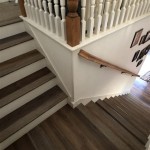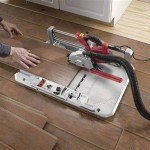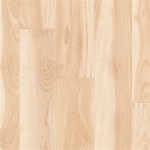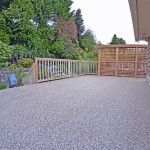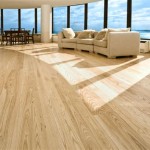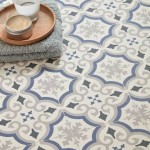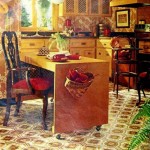What Can You Use To Clean Laminate Floors?
Laminate flooring offers a cost-effective and aesthetically pleasing alternative to hardwood. Its durability and ease of installation contribute to its popularity in residential and commercial settings. However, maintaining the appearance and longevity of laminate floors requires proper cleaning methods and the use of appropriate cleaning solutions. Understanding what products are safe and effective is crucial to avoid damage and preserve the floor's finish.
The composition of laminate flooring dictates the types of cleaning agents that are suitable for its upkeep. Laminate flooring consists of several layers, including a core layer typically made of high-density fiberboard (HDF) or medium-density fiberboard (MDF), a photographic layer replicating the appearance of wood, tile, or stone, and a protective wear layer. This wear layer is typically melamine resin, providing resistance to scratches, stains, and fading. However, this layer is not impervious to damage and can be compromised by harsh chemicals, excessive moisture, and abrasive cleaners.
Water is a primary concern when cleaning laminate floors. Excessive water can seep into the seams between planks, causing the core layer to swell, warp, and eventually delaminate. Therefore, the key to successful laminate floor cleaning lies in using minimal moisture and appropriate cleaning solutions that will not damage the protective wear layer. The following sections will detail specific cleaning agents and methods that are safe and effective for laminate floor maintenance.
Gentle Cleaning Solutions
For routine cleaning, gentle cleaning solutions are typically sufficient to remove dust, dirt, and light spills. These solutions prioritize the preservation of the laminate's finish and avoid the use of harsh chemicals that could cause damage over time. Several options are available, each with its own advantages and considerations.
Distilled White Vinegar and Water: A solution of distilled white vinegar and water is a widely recommended and cost-effective cleaning option. Vinegar is a mild acid that effectively cuts through grease and grime without leaving a residue. The recommended ratio is typically one-quarter cup of distilled white vinegar to one gallon of warm water. This solution should be applied with a damp mop, ensuring that the mop is wrung out thoroughly to prevent excess water from saturating the floor. After mopping, the floor should be allowed to air dry or be dried with a clean, dry cloth.
Dish Soap and Water: A mild dish soap, such as those free of harsh chemicals and dyes, can also be used to clean laminate floors. Only a small amount of dish soap (typically a teaspoon) should be added to a gallon of warm water. Excessive soap can leave a residue that dulls the floor's finish and attracts dirt. Similar to the vinegar and water solution, the floor should be mopped with a damp mop and dried thoroughly.
Commercial Laminate Floor Cleaners: Numerous commercial laminate floor cleaners are available, specifically formulated to clean and protect laminate flooring. These cleaners are designed to be pH-neutral and free of harsh chemicals such as ammonia, bleach, and abrasive particles. It is crucial to read the product label carefully and follow the manufacturer's instructions. Some commercial cleaners may require dilution, while others are ready to use. Always test the cleaner on an inconspicuous area of the floor before applying it to the entire surface to ensure it does not cause discoloration or damage.
Steam Mops (with Caution): Steam mops can be used on laminate floors, but with extreme caution. The high heat and moisture of steam can damage the floor if used improperly. It is essential to ensure the steam mop is set to the lowest steam setting and that the mop pad is clean and in good condition. The mop should be moved quickly and continuously across the floor to avoid prolonged exposure to moisture. Some laminate flooring manufacturers specifically advise against using steam mops, so it is important to consult the flooring's warranty information before using one.
Addressing Stubborn Stains and Spills
While gentle cleaning solutions are effective for routine maintenance, more persistent stains and spills may require specialized treatments. The type of stain will influence the appropriate cleaning method. Prompt attention to spills is crucial to prevent them from setting and becoming more difficult to remove.
For Oil-Based Stains: Oil-based stains, such as grease, cooking oil, or lipstick, can be removed with a solution of warm water and a small amount of dish soap. Apply the solution to the stain, let it sit for a few minutes to loosen the oil, and then gently wipe it away with a soft cloth. Rinse the area with clean water and dry thoroughly. For more stubborn oil-based stains, a small amount of rubbing alcohol applied to a cloth can be used to gently blot the stain. Avoid rubbing vigorously, as this can damage the floor's finish.
For Water-Based Stains: Water-based stains, such as juice, coffee, or wine, should be cleaned immediately with a damp cloth. If the stain has already dried, a solution of warm water and a small amount of vinegar can be used. Apply the solution to the stain, let it sit for a few minutes, and then wipe it away with a clean cloth. Rinse the area with clean water and dry thoroughly.
For Ink Stains: Ink stains can be challenging to remove. Try blotting the stain with a clean cloth dampened with rubbing alcohol. Start at the outer edge of the stain and work your way inward to prevent spreading. Repeat until the stain is removed. If rubbing alcohol is not effective, a small amount of nail polish remover (acetone) can be used, but with extreme caution. Acetone can damage the laminate's finish, so use it sparingly and test it on an inconspicuous area first. Rinse the area thoroughly with clean water and dry immediately.
For Scuff Marks: Scuff marks caused by shoes or furniture can often be removed with a clean eraser. Gently rub the eraser over the scuff mark until it disappears. Alternatively, a damp cloth with a small amount of baking soda can be used to gently scrub the scuff mark. Wipe away any residue with a clean, damp cloth and dry thoroughly.
For Gum or Wax: Gum or wax can be removed by hardening it with ice. Place an ice pack or a bag of ice cubes wrapped in a cloth over the gum or wax until it hardens. Then, carefully scrape it away with a blunt plastic scraper. Avoid using a metal scraper, as it can scratch the floor. Wipe away any remaining residue with a damp cloth.
Preventative Measures and Maintenance Tips
Prevention is key to maintaining the beauty and longevity of laminate floors. Implementing preventative measures can significantly reduce the need for frequent and intensive cleaning. These measures focus on minimizing the introduction of dirt, debris, and moisture onto the floor's surface.
Use Doormats and Area Rugs: Placing doormats at entrances can trap dirt and debris carried in on shoes, preventing it from being tracked onto the laminate floor. Area rugs in high-traffic areas, such as hallways and living rooms, can also protect the floor from wear and tear. Choose rugs with non-slip backings to prevent them from sliding and causing scratches.
Sweep or Vacuum Regularly: Regular sweeping or vacuuming is essential to remove loose dirt, dust, and pet hair. Use a soft-bristled broom or a vacuum cleaner with a floor brush attachment to avoid scratching the floor. Avoid using vacuum cleaners with beater bars, as they can damage the laminate's finish. It is recommended to sweep or vacuum laminate floors at least once a week, or more frequently in high-traffic areas.
Use Furniture Pads: Place felt pads under the legs of furniture to prevent scratches and dents. These pads will also make it easier to move furniture without damaging the floor. Regularly check and replace the pads as needed to ensure they remain in good condition.
Trim Pet Nails: Keep pet nails trimmed to prevent scratches on the laminate floor. Regularly trimming your pet's nails will also help to reduce the amount of pet hair and dander that accumulates on the floor.
Clean Spills Immediately: Promptly clean up spills to prevent them from soaking into the floor and causing stains or damage. Use a clean, absorbent cloth to blot the spill and dry the area thoroughly.
Avoid Excessive Moisture: As previously stated, excessive moisture is a major threat to laminate floors. Avoid using overly wet mops or allowing water to pool on the floor. Always wring out the mop thoroughly before mopping and dry any spills immediately. When cleaning, ensure the water used is not excessively hot, as this can also damage the floor’s finish.
Avoid Abrasive Cleaners and Tools: Never use abrasive cleaners, scouring pads, or steel wool to clean laminate floors. These can scratch and dull the floor's finish. Stick to gentle cleaning solutions and soft cloths or mops.
By implementing these preventative measures and following the recommended cleaning guidelines, it is possible to maintain the beauty and extend the lifespan of laminate floors.

How To Clean Laminate Floors Tips Advice Wipeout

Deep Cleaning Your Laminate Floors A Step By Guide

How To Clean Laminate Floors

Ways To Clean Laminate Floors Bond Cleaning In Sunshine Coast

Full Guide On Cleaning Laminated Floors

Caring For Your Laminate Floor Finfloor

Clean Your Hardwood Or Laminate Floors Naturally Onesmileymonkey Com
How To Clean Laminate Wood Floors Without Damaging Them Quora

How Do I Clean My Laminate Floor And Maintain Its Appearance Levelfinish

How To Clean Laminate Floors Like The Pros Bis
Related Posts

